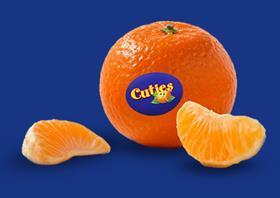
As Jacqui Green of Berry Gardens said at FPJ Live last month, the best way for a fresh produce supplier to achieve lasting growth is by eating into the sales of confectionary and junk food, not cannibalising revenues from other fruit and veg producers. And as consumer awareness of health and the benefits of plant-based diets grows, there is a rising opportunity to boost fresh produce sales. The UK’s citrus market, which grew by 3.7 per cent in the year to 7 October [Kantar Worldpanel], is seemingly well placed to capitalise on this.
Last month saw the announcement of a £2million advertising campaign to promote fresh produce consumption on ITV – hopefully at the expense of processed food and confectionery – but in the easy peeler category more specifically, there is a regrettable lack of investment in promotion, according to Pacific Produce’s managing director Rob Cullum – especially compared to some other fruits such as avocados and berries.
“I think the competition between producers is healthy because it increases quality and gives the consumer a better deal, but we should be focusing less on each other and more on our consumers to try to get them to eat more mandarins,” he says.
Cullum says that for growers of mandarins, which have emerged as the bestseller for UK citrus suppliers in recent years, there’s no good tool available for promotion – and there’s little incentive for the big European producers to put their money where their mouth is and invest in advertising aimed at boosting consumption.
“There are plenty of big players in Europe but nobody can put money into a promotional pot because it’s not just going to benefit them, it’s going to benefit the whole market,” he explains. “In the US, by contrast, there are two huge, strong brands, Cuties and Halos, which promote easy peelers. Each is putting $10m or $15m a year into advertising – they have TV adverts, they’re in the Happy Meal at McDonald’s, they have huge gondola-end promotions in retailers, and they pay to replace candy at the checkout.”
In Europe there’s Jaffa, which Cullum says is helping to drive easy peeler consumption, but he stresses that the brand is “not on the scale” of Cuties or Halos. “In Europe you’ve only got a few fresh produce brands, such as Pink Lady and Tenderstem, that have the margin, the capital and the brand through to the consumer to do it, but in mandarins there isn’t one.”
When it comes to varietal development in easy peelers, Cullum says progress has been slow. There have been a handful of reasonably promising new varieties coming through in the past few years, such as Valley Gold, Leanri and Golden Nugget, but up until now there’s been no “knockout variety” which outperforms those already available.
What many producers are chasing, he says, is an early clementine; possibly a late mandarin to differentiate from Nadorcott or Tango; and a pigmented mandarin (similar to a blood orange) that tastes good, is easy to peel and has no seeds, “that would catch people’s attention,” adds Cullum.
In lemons, Sisco Tello of Fesa UK reports that many Spanish growers have been expanding their varietal portfolio, adding things like pink lemons (also known as ‘tiger’ or ‘zebra’ lemons due to their distinctive stripy skin); Meyer lemons (a cross between a regular lemon and a mandarin); and some more niche citrus varieties, such as kumquats, finger limes and sweet limes.






No comments yet